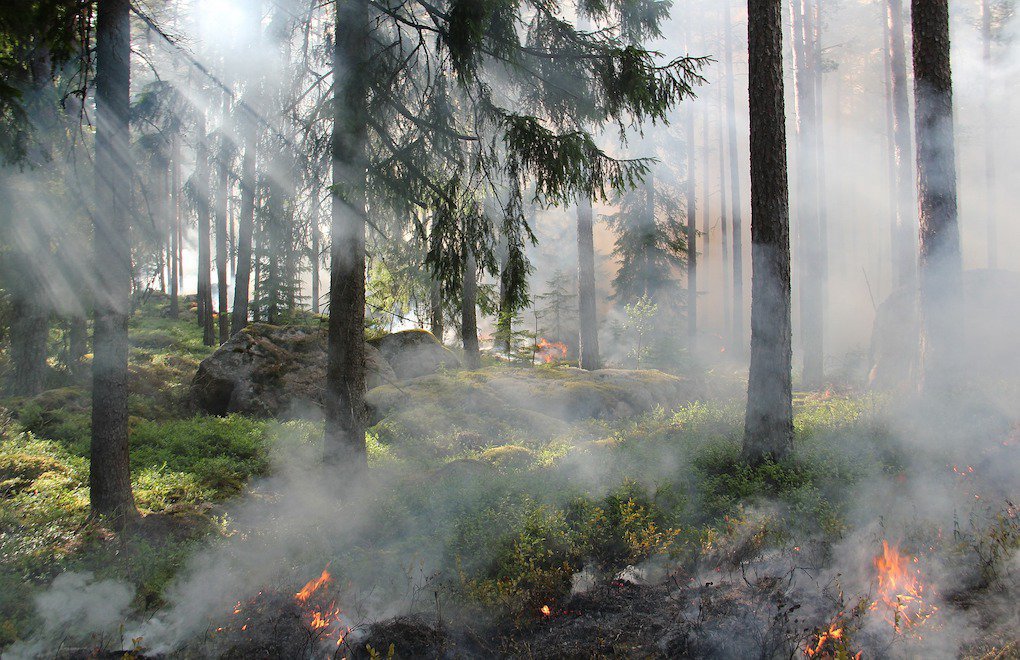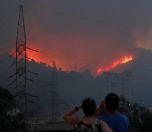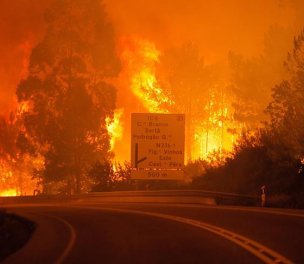* Photo: Pixabay
Click to read the article in Turkish
The Copernicus Atmosphere Monitoring Service (CAMS), one of the six services that form Copernicus, the European Union's (EU) Earth observation programme, tracked the impact of wildfires in 2021.
Using satellite observations of active fires, the CAMS estimated the amount of pollutants they emited in near-real-time and predicted the impact on global atmospheric composition and air quality.
According to the CAMS scientists, global wildfires in 2021, when several regions around the world, including Turkey, experienced devastating wildfire seasons, caused an estimated total of 1,760 megatonnes of carbon emissions, which is the equivalent of 6,450 megatonnes of CO2.
Considering that the total CO2 emissions from fossil fuel in the EU in 2020 was 2,600 megatonnes, wildfires this year generated 148 percent more than the total EU fossil fuel emissions in 2020.
According to Mark Parrington, a Senior Scientist from the European Center for Medium-Range Weather Forecasts (ECMWF) Copernicus Atmosphere Monitoring Service, this year's wildfire activity in some regions was at a much larger scale than previously seen in the CAMS dataset.
"As the year draws to a close, we have seen extensive regions experience intense and prolonged wildfire activity. Drier and hotter regional conditions under a changing climate have increased the risk of flammability and fire risk of vegetation," said Parrington, adding that this had led to some extremely large and fast-developing fires that persisted for a long time.
Consequently, several regions around the globe saw some of their highest estimated emissions in 2021, based on the CAMS 19-year Global Fire Assimilation System (GFAS) dataset, going back to 2003.
The regions that experienced a number of extreme wildfires, especially in summer 2021, included vast expanses in Siberia, North America, the eastern and central Mediterranean, and North Africa.
The CAMS has shared the following details about these regions:
Siberia, North America
"A huge number of wildfires raged across areas of western Siberia, around Omsk and Tyumen, resulting in daily emissions at well above the mean of previous years in the dataset for 2003-2021.
"Other regions in eastern Russia, including parts of the Arctic Circle, Chukotka Autonomous Okrug and Irkutsk Oblast, also experienced fires, but much less than in 2020 and 2019.
"Wildfires burned across western parts of North America for a significant period from the end of June to late August.
"The worst affected areas included several provinces in Canada, as well as California and the states in the Pacific Northwest of the USA.
"Among the fires was also the largest recorded fire in Californian state history, dubbed the Dixie Fire after the road in which it started.
"The Dixie Fire managed to burn through almost a million acres, before it was finally 100 percent contained in October.
"In all, these fires released estimated total carbon emissions of approximately 83 megatonnes into the atmosphere.
Mediterranean, Indian sub-continent
"Many countries around the eastern and central Mediterranean suffered several days of high intensity wildfires in July and August, leading to high concentrations of fine particulate matter (known as PM2.5) and degraded air quality. The particularly dry and hot conditions throughout the summer months provided the ideal environment for intense and long-lasting wildfires.
Turkey was the worst hit in July, with CAMS GFAS data showing daily fire intensity at very high levels which were well above average for the region. Other countries also affected by the devastating wildfires included Greece, Italy, Albania, North Macedonia, Algeria and Tunisia.
"Seasonal crop stubble burning in Pakistan and north-western India occurs every year between late September and the end of November.
"This contributed to degraded air quality throughout the Indo-Gangetic Plain, extending from Pakistan to Bangladesh, where significant air pollution was observed, affecting millions of people.
"The majority of the fires were in the Indian states of Punjab and Haryana. Punjab, in particular, experienced a high number of fires and emissions - the CAMS GFAS estimated emissions for September-November were highest in 2021 for the dataset. Pakistan also experienced several days of above average fire radiative power during this period.
"The accumulation of air pollution and haze across the Indo-Gangetic Plain during this period was due to a combination of factors – emissions caused by agricultural activity, colder temperatures and the topography (in the image below you can see how the line of the Himalayas acts as a barrier, keeping emissions and particulate matter in place)." (TP/SD)








